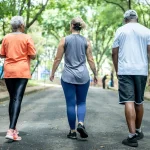KABUL: A doctor at a nearby hospital told AFP that a blast at a madrassa in the northern city of Aybak on Wednesday caused at least 19 deaths and 24 injuries.
There have been many impacts and goes after focusing on regular citizens since the Taliban got back to control in August last year, most guaranteed by the neighborhood part of Daesh.
The majority of the victims, according to the doctor in Aybak, about 200 kilometers (130 miles) north of Kabul, were children.
He told AFP, requesting anonymity, “All of them are children and ordinary people.”
The explosion at the Islamic religious school Al Jihad was confirmed by a provincial official, but they were unable to provide any casualty figures.
Ten students had died, the Taliban claimed, and “many others” had been injured.
Abdul Nafay Takor, a spokesperson for the Interior Ministry, tweeted, “Our detective and security forces are working quickly to identify the perpetrators of this unforgivable crime and punish them for their actions.”
Unconfirmed social media images and videos showed Taliban fighters picking their way through bodies scattered across the floor of a building.
The scene was littered with prayer mats, broken glass, and other objects.
Lull between blasts According to the Aybak doctor, some critically ill patients had been transferred to Mazar-i-Sharif, a 120-kilometer road trip away, with better facilities.
“The majority of the people who are here were injured by blast waves and shrapnel.”He stated, “They had some shrapnel on their body and face.”
Aybak is a provincial capital that is small but has been around for a long time. In the fourth and fifth centuries, it became important as a Buddhist center and a stopover point for caravans of traders.
Although a few Taliban fighters have been killed in isolated attacks, there has been a lull in the number of major blasts in Afghanistan that have targeted civilians for a few weeks.
A suicide bomber detonated a device in a Kabul hall packed with hundreds of students taking a practice test for university admissions in September, killing at least 54 people, 51 of whom were girls and young women.
The Taliban later blamed Daesh and stated that it had killed several ringleaders, despite the fact that no group claimed responsibility for that bombing.
Three bombs exploded near their school in the neighborhood in May of last year, prior to the Taliban’s return to power. No group claimed responsibility, but a year earlier, Daesh claimed a suicide attack on an educational center in the area that killed 24 people.
At least 85 people, mostly girls, were killed and about 300 were injured.
The Taliban’s insurgency ended with their return to power, but Daesh continues to carry out attacks across the country.
The Pashtun-primarily ethnic Taliban movement has pledged to safeguard minorities and combat security threats.
Amnesty International tweeted that the attack was “yet another reminder to the world that the sufferings of Afghan people are far from over,” adding that it was “disturbing.”








